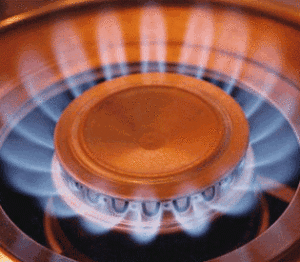 Natural gas rose on Friday, paring a weekly decline, as weather forecasts called for a cold start to February across the Great Lakes and Northeast. However, expectations for the remaining portions of the US to remain near or warmer than normal, coupled with a much thinner inventory decline to come, kept gains in check.
Natural gas rose on Friday, paring a weekly decline, as weather forecasts called for a cold start to February across the Great Lakes and Northeast. However, expectations for the remaining portions of the US to remain near or warmer than normal, coupled with a much thinner inventory decline to come, kept gains in check.
Natural gas for delivery in February traded 2.96% higher at $2.919 per million British thermal units at 11:02 GMT, having shifted in a daily range of $2.933-$2.855. The contract fell 4.67% yesterday to $2.835 after it earlier dropped to $2.766, the lowest since September 20th, 2012. Prices are down 6.1% for the week so far.
The EIA reported yesterday that US natural gas inventories fell by 216 billion cubic feet in the seven days through January 16th, compared to analysts’ projections for a drop in the range of 220-230 bcf. This was above the five-year average decrease of 176 bcf and last year’s decline of 133 bcf during the comparable period.
Total gas held in US storage hubs amounted to 2.637 trillion cubic feet, expanding the deficit to the five-year average of 2.790 trillion to 5.5% from 3.8% during the previous period. The surplus to the year-ago stockpile level of 2.438 trillion cubic feet narrowed to 8.2% from 11.0% a week earlier.
Teri Viswanath, director of commodities strategy at BNP Paribas SA in New York, said for Bloomberg: “This storage number was a bit surprising, and it adds to the bearish sentiment that has developed in this market. Production growth is largely holding steady and supply is a real concern”
Next week’s report is expected to reflect a much thinner inventory withdrawal that would bring deficits to ~100 bcf once again as the recent overall mild conditions across the US get factored in. The five-year average decline for the week is 168 billion cubic feet, while inventories fell by 219 bcf during the comparable period last year.
US weather outlook
Active weather throughout January and early-February helped the market regain some positions, but upside movement was capped as the majority of the US will likely remain mild in the coming two weeks.
According to NatGasWeather.com, natural gas demand in the US will be moderate compared to normal through January 29th, with a warmer weather trend for the West during the following seven days, while the East will experience colder conditions.
The majority of the country continues to enjoy mild temperatures, apart from the Southeast and Texas which will be affected by a weather system with snow accumulations behind it. A more notable system will track across the Midwest and Northeast early next week and push deep into the Southeast, carrying lower-than-usual readings.
Additional weather systems will follow throughout the week, NatGasWeather.com reported, lowering temperatures for the Great Lakes and Northeast to below normal and carrying rain and snow. Arctic air is expected to infiltrate these regions through February 3rd, inducing strong heating demand. Although the weather data are still unclear for the beginning of February, the frigid conditions will likely be contained within the North, allowing for the remaining portions of the US to warm up above the usual, keeping national natural gas demand at moderate levels.
Temperatures
According to AccuWeather.com, readings in New York will range between 25 and 39 degrees on January 25th, compared to the average 27-38, before dropping to 17-26 degrees three days later. Chicago will enjoy mostly seasonal weather through January 29th, with readings on January 25th set to range between 18 and 33 degrees Fahrenheit, compared to the average 18-32.
Down South, temperatures in Houston will max out at 60 degrees tomorrow, 3 below normal, before jumping to 67-68 degrees through January 29th. On the West Coast, Los Angeles will see the mercury top 83 degrees on January 25th, 15 above average, and will remain warmer than usual through the end of the month, with highs set to range between 71 and 77 degrees.
Pivot points
According to Binary Tribune’s daily analysis, February natural gas futures’ central pivot point stands at $2.883. In case the contract penetrates the first resistance level at $3.000 per million British thermal units, it will encounter next resistance $3.165. If breached, upside movement may attempt to advance to $3.282 per mBtu.
If the energy source drops below its first support level at $2.718 per mBtu, it will next see support at $2.601. If the second key support zone is breached, the power-station fuel’s downward movement may extend to $2.436 per mBtu.





